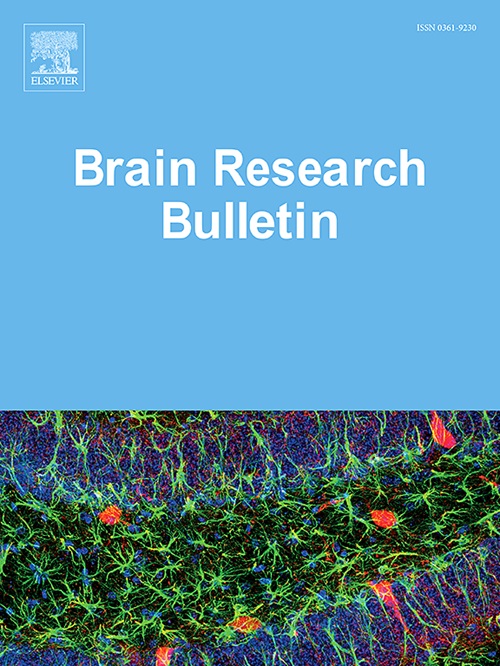Interpreting the rich dialogue between astrocytes and neurons: An overview in Rett syndrome
IF 3.5
3区 医学
Q2 NEUROSCIENCES
引用次数: 0
Abstract
Rett syndrome (RTT) is a severe neurodevelopmental disorder primarily affecting females, with an incidence of 1 in 10,000 live births. It is caused mainly by de novo mutations in the X-linked MECP2 gene, which encodes methyl-CpG binding protein 2 (Mecp2), a key epigenetic regulator. MECP2 mutations have profound impacts on neurons, which exhibit morphological, synaptic and functional impairments. However, more recent evidence highlights a crucial role of astrocytes in RTT pathogenesis. Indeed, RTT astrocytes exhibit structural and functional impairments, failing to support neuronal growth and function through non-cell autonomous mechanisms. Studies reveal that MECP2 deficient astrocytes secrete abnormal factors that impair neuronal growth and synaptic function. Furthermore, they show dysregulated calcium signalling, disrupted glutamate and potassium homeostasis, and increased inflammatory responses, all of which contribute to neuronal dysfunction. Understanding these neuron-astrocyte interactions may offer novel therapeutic targets for RTT. In the review we aim at presenting the current knowledge of astrocyte-neuron crosstalk in RTT, describing the different mechanisms highlighted so far through which MECP2 mutant astrocytes impair neurons. Finally, we discuss existing and prospective methodological approaches for investigating cell-to-cell communication in RTT.
解释星形胶质细胞和神经元之间丰富的对话:Rett综合征综述
Rett综合征(RTT)是一种主要影响女性的严重神经发育障碍,发病率为万分之一。它主要是由x连锁MECP2基因的新生突变引起的,该基因编码甲基- cpg结合蛋白2 (MECP2),这是一个关键的表观遗传调节因子。MECP2突变对神经元有深远的影响,神经元表现为形态、突触和功能损伤。然而,最近的证据强调了星形胶质细胞在RTT发病机制中的关键作用。事实上,RTT星形胶质细胞表现出结构和功能损伤,无法通过非细胞自主机制支持神经元生长和功能。研究表明,MECP2缺陷的星形胶质细胞分泌异常因子,损害神经元生长和突触功能。此外,它们还表现出钙信号失调,谷氨酸和钾稳态紊乱,炎症反应增加,所有这些都有助于神经元功能障碍。了解这些神经元-星形胶质细胞相互作用可能为RTT提供新的治疗靶点。在这篇综述中,我们旨在介绍RTT中星形细胞-神经元串扰的最新知识,描述迄今为止强调的MECP2突变星形细胞损害神经元的不同机制。最后,我们讨论了研究RTT细胞间通讯的现有和未来的方法方法。
本文章由计算机程序翻译,如有差异,请以英文原文为准。
求助全文
约1分钟内获得全文
求助全文
来源期刊

Brain Research Bulletin
医学-神经科学
CiteScore
6.90
自引率
2.60%
发文量
253
审稿时长
67 days
期刊介绍:
The Brain Research Bulletin (BRB) aims to publish novel work that advances our knowledge of molecular and cellular mechanisms that underlie neural network properties associated with behavior, cognition and other brain functions during neurodevelopment and in the adult. Although clinical research is out of the Journal''s scope, the BRB also aims to publish translation research that provides insight into biological mechanisms and processes associated with neurodegeneration mechanisms, neurological diseases and neuropsychiatric disorders. The Journal is especially interested in research using novel methodologies, such as optogenetics, multielectrode array recordings and life imaging in wild-type and genetically-modified animal models, with the goal to advance our understanding of how neurons, glia and networks function in vivo.
 求助内容:
求助内容: 应助结果提醒方式:
应助结果提醒方式:


